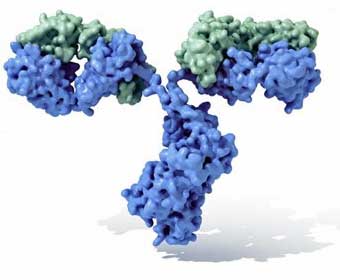

One of the first questions that could be answered regarding long COVID quite quickly is why it’s happening. Why did one person not recover when so many others did? That question has bedeviled many people with chronic fatigue syndrome (ME/CFS), post-infectious fibromyalgia, post-treatment Lyme Disease.
Who has not searched their past looking for some clue to help explain what happened? In my case, did a concussion or a Giardia infection, a tendency towards messy bowel movements, or my mother’s Sjogren’s Syndrome render me more susceptible, and if so, why did my twin never succumb?
Answers to those questions have rarely been forthcoming but they may be soon – at least for long COVID. Color me optimistic but it seems to me that the question of what happened may be one of the easiest and quickest to resolve in long COVID.
The reason is that in contrast to ME/CFS and other post-infectious diseases, the coronavirus – thanks to its incredible persistence is going to be spectacularly easy to catch in the act. Plus, thanks to the congressionally funded NIH and other studies, researchers will already have ample biological data on some people as they come down with long COVID.

It’s simple. Test the heck out of people who come down with COVID-19 and then again when they come down with long COVID.
The course seems clear: test the heck out of people as they come down with COVID-19, and then follow them and see how they change biologically. This kind of study doesn’t require a genius or some grand hypothesis to be successful. It needs lots of money and access to cutting-edge tools – both of which appear to be amply available. That’s why I hope and believe that over the next year or so we’ll get some real insights into how long COVID starts and why it occurs.
We’ve already seen one study suggest that the seeds of long COVID show up very early in the infection. Now comes another study suggesting the same.
The Study
The Immunoglobulin signature predicts the risk of post-acute COVID-19 syndrome study demonstrates how long COVID has galvanized the research community in ways ME/CFS and fibromyalgia never have. This undoubtedly quite expensive 600-plus person hailed from a country – Switzerland – which I don’t remember funding any ME/CFS studies. It received funding from nine different Swiss agencies and groups. Given the time needed to analyze the results, write them up and get them published, it’s clear that this study, which had a year’s worth of data, began quite early in the long-COVID “era”.
The study began with 134 people with PCR-confirmed COVID-19 – about 2/3rds of whom experienced mild COVID.
Fifty percent still experienced at least one symptom after 4 weeks, with those with severe COVID-19 being more likely to experience prolonged symptoms. Conversely, people with high IgG3 levels prior to coming down with COVID-19 had a decreased risk of coming down with long COVID.

Low levels of IgG3 were associated with an increased risk of coming down with long COVID.
People who came down with long COVID or PACS (post-acute-coronavirus syndrome) were characterized by decreased IgM3 levels – both during the initial coronavirus infection and apparently six months and even a year later. In contrast to the increased IgG3 levels found during the initial infections in the COVID-19 patients who did not come down with long COVID, no increase in IgG levels was found in those who did come down with long COVID. None of the other IgG test results (IgA, IgG2, and IgG4) were significantly different.
Healthy controls with low IgG3 levels prior to coming down with COVID-19 were also at increased risk of coming down with long COVID. Next, the researchers took their IgG data, added as many factors to it as they could (age, sex, number of symptoms, disease severity, comorbid illnesses, etc.), and attempted to build a prediction model that highlighted people at risk of coming down with long COVID. The findings were then validated in a cohort of almost 400 COVID-19 patients.
The model found that having low IgG levels, being older, having a history of asthma, and experiencing a lot of symptoms during the initial infection – had a nice “area under the curve” (AUC) value of 73% which indicated that the model accurately predicted who would come down with long COVID 73% of the time. (Female gender, interestingly, was not predictive in this model).
Applying the model to hospitalized patients boosted its predictiveness to a remarkable 99% – meaning that simply assessing IgG levels, the presence of asthma, being older, and having more symptoms during the initial infection – predicted virtually every hospitalized person who came down with long COVID later.
Applying the model to non-hospitalized patients dropped the model’s predictive value to 64%; i.e. it correctly predicted almost two-thirds of the people with milder COVID who would go on to develop long COVID.
The low IgG levels were particularly intriguing as IgG antibody levels are usually stable over time and are not difficult to test; i.e. they could, if this finding is validated, provide an easy snapshot that could indicate who has an increased risk of coming down with long COVID.
The authors suggested that hospitals and doctors assess patients’ PACS scores and begin to assess if preventive treatment strategies, “such as the use of inhaled corticosteroids in asthmatic and non-asthmatic patients, and intravenous Ig therapies” are able to reduce the occurrence of long COVID.
Causes

Low levels of IgG3 were associated with an increased risk of coming down with long COVID. particularly if they’d been hospitalized. Many more sophisticated models will surely be produced over time.
The authors proposed that an inability to quickly fight off the initial coronavirus infection may lay behind the emergence of long COVID. Interferons play an outsize role in fighting off viruses and induce B-cells to produce IgG3. Given that low interferon levels have been found in people who’ve had difficulty fighting off the coronavirus the low Ig3 levels made sense.
Having asthma turned out to be a big risk factor for long COVID. While that might not seem surprising in a condition that impairs lung functioning, other possibilities could explain the link. People with asthma tend to produce increased levels of L-4 – which blocks IgG3 production and indeed low IgG3 levels have been found in asthma.
Demonstrating that the body is nothing if not complex, several studies have suggested that having asthma may be protective to some degree and lessens the chance of having severe COVID-19. One paper attempting to explain this phenomenon noted that the same mechanism (Th2 dominance, eosinophilic upregulation) that may make asthma protective in COVID-19 might make one more susceptible to long COVID.
Given the apparently low recognition given ME/CFS in much of Europe, it was good to see these Swiss authors note that low IgG levels have been found in ME/CFS – a disease they called “debilitating”. Indeed, several studies have found IgG3 deficiencies to be the most common immunoglobulin deficiencies found in ME/CFS.
The authors’ suggestion that IVIG and similar therapies might turn out to be useful brought up the question of whether IVIG might work in ME/CFS as well. While IVIG studies have not, on the face of them, seemed to argue for the widespread use of IVIG in ME/CFS, Brownlie and Speight recently argued that interpreted properly, the studies indicate the ME/CFS patients who benefit often do so quite significantly, and that research should continue to tease out the subgroups of patients that benefit. They also assert that the evidence thus far suggests that PACS or long COVID-patients may benefit as well. They are not the first to suggest that, and many studies have been assessing IVIG effectiveness in COVID-19.
Conclusion
This study – one of the first to employ predictive modeling – produced some interesting possibilities including that an immune deficiency found in a subgroup of ME/CFS patients (IgG3 deficiency) might open the door to long COVID as well. That finding, if validated, could provide a relatively easy-to-access test that could assess the risk of coming down with long COVID. It could also open the door to immune enhancement strategies such as IVIG that have shown to be helpful in a subset of people with ME/CFS.
We’ll see many more predictive modeling long COVID studies that assess biological factors at the time of infection and then during the emergence of long COVID to try and figure out how this mysterious condition got started and how it’s being maintained.


 Health Rising’s Quickie Summer Donation Drive is On!
Health Rising’s Quickie Summer Donation Drive is On!



Great that you picked this one up. I’ve been following this one as well, and am similarly most intrigued by the IgG subset findings. It’s an easy/available test, but not one done often. As we’ve long known, answers could be hiding under our nose!
By chance, I had this testing done just before I got hit by an apparent long-Vax reaction (significant, sudden progression of prior ME/CFS) and indeed low IgG3 was found.
One thing I wonder about is what their criteria for “asthma” is…is it having a prior clinical note for asthma or a hard diagnosis for asthma. Asthma is such a common diagnosis, I suspect it often gets applied to any breathing complaint. Very rarely is a methacholine challenge done to verify an expiration defect.
I agree with your comment about asthma. I was diagnosed with it years ago. However, no inhalers actually work for me. Also, the only problem is a cough; I don’t have any air flow problems. This year the pattern has been completely different but they keep doubling my inhalers. I’ve just gone off them and it makes no difference. I suspect the cough is a result of silent reflux. I am awaiting a call back from my doctor to discuss this.
Diane, my son has asthma and its just a cough. Inhalers make no difference. The asthma nurse said milk could cause this coughing. She said it was common in those who had milk allergy as a baby.
Diane and Helen, when I was a practicing acupuncturist I treated a number of patients who had the western medicine diagnosis of asthma. One patient in particular reported a specific kind of cough, which always occurred before an asthma air flow problem. But that cough was not always followed by an airflow problem.
The patient and I did some brainstorming; she decided to go without consuming any wheat and/or dairy products for 2, possibly 3 weeks. She reported that on day ten of this try out, she stopped having her distinctive cough. At that point, she continued dairy-free, wheat-free, and cough-free/asthma-free. About a week later she had a wheat tortilla and some small amount of sour cream. Her cough and air flow difficulty returned soon after, on that day.
This is not intended to be health care advice. It is merely anecdotal.
Since then, I began to have my own air flow problems, that happened only when I’d gotten a bit of second hand tobacco smoke. (But didn’t happen every time of getting any smoke.) I had already had professional training re. pulmonary therapy exercises so I did those methods myself and did ok. Again, this is not healthcare advice for anyone out there – just anecdotal. Two (-plus) years later I was personally referred to a pulmonologist for some other reason — not for asthma. They diagnosed exertional asthma. Come to think of it, that somewhat explained the previous, rare, air flow issue, sort of. Now it’s high time to go get the IgG3 test, seek a confirmation of a methacholine challenge, and more respiratory therapy training.
H Diane, my sister had a persistent cough. They first said ‘whooping cough’ but eventually she was diagnosed with something called sarcoidosis. I believe these are nodules that flare up at times and then settle. Not sure what sets them off but.. she lives in Germany near a main road (pollution)her husband keeps pigeons in the loft (dust) and has a podiatry/shoe making business on the ground floor (dust and synthetic chemicals)
But when they go to the beach on holidays….magically she feels better!
She is assisted by some extra supplements she takes regularly.
Interesting article. But honestly, even if they would find out for sure IVIG would work, I don’t think it would ever be FDA approved here in the US for ME and fibromyalgia. Multiple studies would need to be done for the FDA to approve it, so the insurance company would pay for it. Only the extremely rich would be able to afford it. An average person could never afford it to be given off label cause it would take multiple doses and probably a lifetime maintenance to maintain the IgG3 levels. The average cost for someone who gets this treatment (IVIG) ranges from ($100,000-$150,000/yr) depending on what article you are reading.
Yes, a while back I was prescribed IVIG for anti-phospholipid syndrome, and the insurance company denied it. It was going to be $11,000 out of pocket. Gah!
Clarification: $11,000 per month!
Wow. … wow.
Not necessarily. When I was getting IVIG it was costing about $3000 per month. Expensive but not anywhere near what you quoted. And my insurance covered it as I had documented low total IGG and subclasses. For long Covid it may not be needed for life as it is with CVID. It may be able to reset or restore the IG3 levels in short period of time. It’s certainly worth a try at least.
Excellent, thanks for reporting this important study, Cort. You might want to check into the NIH Phase 3 Trial of Hyperimmune IVIG used in combination with Remdesivir reported by NIH in “COVID-19 Therapeutics Prioritized for Testing in Clinical Trials” under “ACTIV-6 Outpatient Repurposed Drugs.”
Interesting, thanks Gemini
Cort, can you share any general impressions you’ve formed of how well the ME/CFS community is faring when we contract Covid? Hard not to wonder what percentage of people with CFS recover from Covid no worse for the exposure. Obviously it depends on many individual factors but any light you can shed on this would be welcome.
A poll we did suggested that it hit a subset of people hard and 40% were not back to baseline within 6 months. Click on the Results tab at the bottom of the poll to get them.
https://www.healthrising.org/blog/2021/11/03/health-risings-coronarvirus-infection-and-vaccine-side-effect-poll-take-ii/
Thanks, some truly impressive data collection.
Thank you for the promising information. I generally read all that you publish for few years now and also look for other reputable resources as a 25yr long sufferer of fibromyalgia. With this emerging and hopeful Covid related research it’s more important than ever that I align with the most appropriate field of medicine for treatment now and going forward. I’ve been seeing a rheumatologist regularly for many years; previously with a neurologist. Would you be willing to provide your feedback on the matter in terms of direction to go for ongoing health care that may eventually incorporate treatment based on these more current findings? I’d certainly value your thoughts. Sincerely Mary Jo
Interesting question. I wish I had a good answer. You could choose depending on which practitioner seems to be most on top of things – and is most interested in what’s going on in the long COVID field and most willing to apply it.
Certainly, there’s a lot of interest in the central nervous system findings and now we have potential autoimmune issues cropping up as well. Both fields will clearly be involved.
It could also depend on what the future holds for long COVID – will immune treatments pop up or will treatments that target the central nervous system? Treatments potentially pop up – as Goebel’s work in fibromyalgia suggests – that target both.
Just really guessing I would think the immune system is going to be involved which would suggest that a good rheumatologist might be quite helpful. On the other hand look at Abilify in ME/CFS. I don’t think anyone dreamed that that drug might be involved.
I would think it will be important to keep eyes and options open and see which way the science moves.
Genetic deformities are the root cause of these systemic diseases , which all stem from poisoning of habitat, overpopulation, Etc. by the dominant species
Can you clarify — was it “more different symptoms” or “more severity of symptoms” that was predictive of developing long covid? I thought there was evidence less severe illness was linked to more likelihood of long covid?
I believe it was more symptoms overall.
Cort, this is so very welcome and well said — thank you! It’s interesting that you’re noting both neurological and autoimmune aspects. Twenty-two years ago I was beyond baffled and heart broken when my health and energy levels went awol. The _eighth_ doctor I went to finally said I had something “like fibromyalgia.” She thought it was mainly autoimmune and neurological. Now in 2022 you and our ME community are looking specifically, more informed than ever, at the neurological and autoimmune.
It was great to find that internist/family practice doctor. She was a knowledgeable quarterback of a variety of mainstream and integrative specialists who were mostly covered by insurance. Well, mostly. Btw, that M.D. had completed a postdoctoral program in Arizona – am I allowed to say this here? – an integrative program under the auspices of a doctor whose name starts with W and rhymes with dial. She was expensive yet empathetically cost-conscious whenever possible. More and more alumni of that Arizona program are practicing across the U.S., and maybe beyond.
Meanwhile, thank you again for this new dose of hope!
Interesting to see the mention of IVIG. In the UK this is now almost impossible to access even if you have both ME and SFPN. NICE has severely restricted its use in the NHS and in the private sector one solitary ‘flush’ costs about £10,000. It would be nice to think useful therapies might be more accessible to pwme as a result of LC (irritatingly so) but there seems to be a considerable lack of interest in helping pwme in the UK atm. Some of us need help now.
More studies more confusion when already there is a substantial evidence in reputable research into long Covid. The common conclusion of this research is reactivation of Epstein Bar Virus during infection with Covid . I have Chronic active EBV DETECTED by PCR DNA test and was also IgM positive on EBV serology. I was not always positive on IgM EBV serology until my Chronic Fatigue syndrome became worse. So EBV serology is not sensitive enough or reliable for EBV test. You must have PCR DNA test to determine if the virus has reactivated. Long COVID is similar to CFS because it is the same reactivation of Epstein Bar Virus which took the opportunity to reactivate while the body was under stress with Covid infection. This is why so many people say they came down with CFS after EBV (glandular fever) or viral infection. The virus is still active but tests are not sensitive enough or reliable to detect the virus except for PCR DNA test.
Interesting. I am IgG subclass 1 deficient, and while my subclass 3 is within normal range, it’s low-normal. Rather, on the very low end of normal (in a normal range given of 22 – 178 mg/dL, I’m all the way down at a measly 37).
So when we’re talking about the problem is “low” v “high” IgG3 levels, do they mean only “below normal range” leads to Long Covid, or even on the low-end of “normal” can lead to Long Covid? (I tried to look at their paper to see if I could find the answer and couldn’t figure it out!)
This Swiss study is very interesting, looking at the immune response of different individuals, in relation to a Covid-19 infection.
Similarly, it’ll also be interesting to see what Leonard Jason and Dr Ben Z. Katz find in their longitudinal study of college students, in relation to EBV and developing ME/CFS.
“NIH-funded study examines mono, chronic fatigue syndrome in college students”
“We are the only study to collect comprehensive biological and behavioral data prior to illness onset, which for the first time allowed us to identify some of the predisposing circumstances or conditions that make certain individuals more likely to get ill due to mono and stay ill,” said Jason, director of the Center for Community Research at DePaul. Leonard A. Jason.
“Some people who are attacked by a virus stay sick. What we’ve found is that their emotional functioning and psychological states are not statistically different from those who get attacked by the same virus and recover. This becomes important validating information for those people who have this illness,” said Jason.
Forgot the link. Fairly indicative of my level of functioning today – zzzz…
https://resources.depaul.edu/newsroom/news/press-releases/Pages/mecfs_mono_2021.aspx
Does anyone know what “low” IgG3 actually is in the context of this study. If the reference range is 15-102 what is considered “low” and what is considered an “increased or high level” per the study? It would help a lot to know this detail.